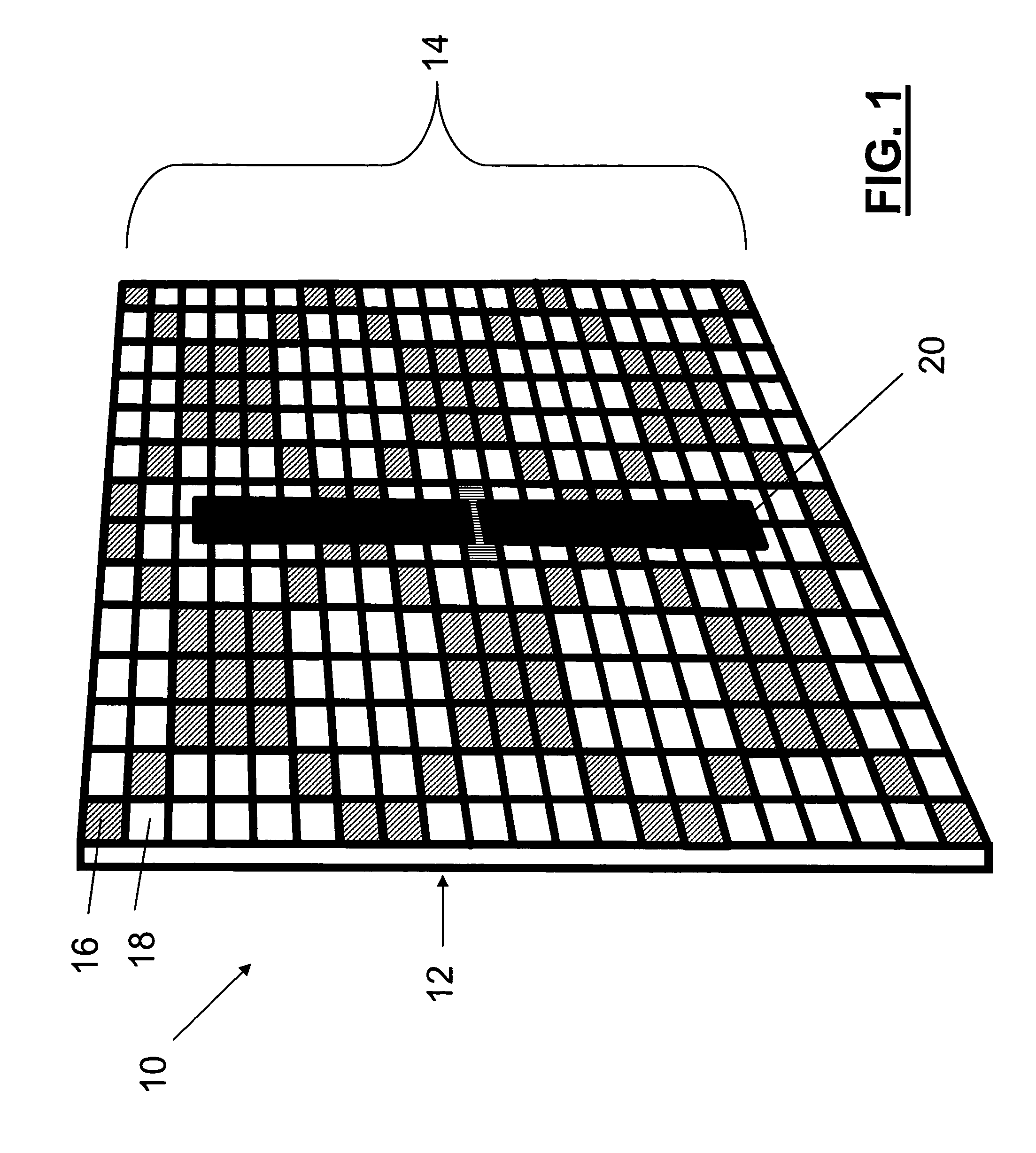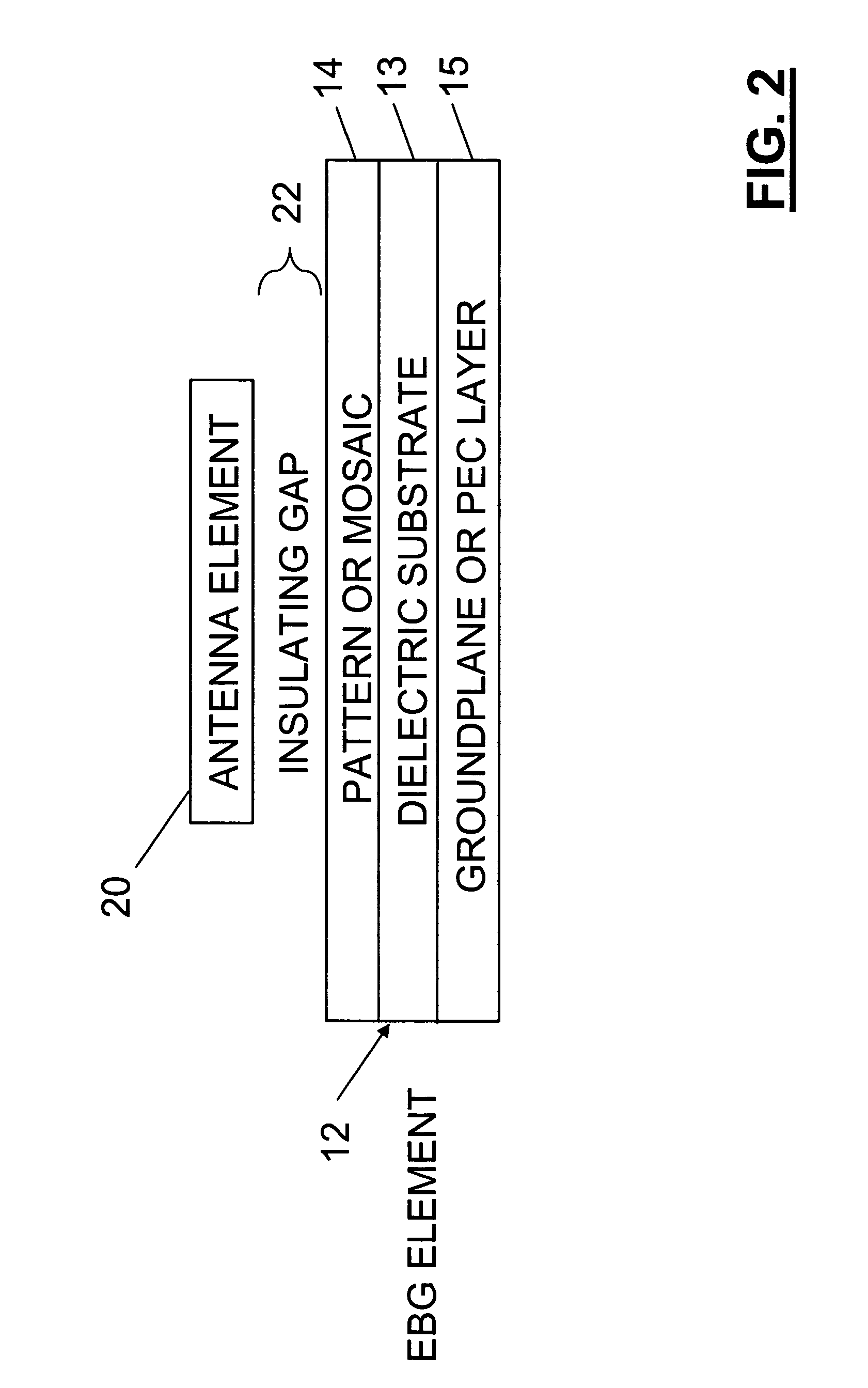High-selectivity electromagnetic bandgap device and antenna system
a high-selectivity electromagnetic and bandgap technology, applied in the direction of antennas, antenna feed intermediates, electrical devices, etc., can solve the problems of limiting the bandwidth of an antenna, tunable antennas that do not provide system selectivity, and designing such a structure can become quite difficult for low frequency applications, so as to improve the overall frequency agility of the antenna system, the effect of adding tunability to the ebg
- Summary
- Abstract
- Description
- Claims
- Application Information
AI Technical Summary
Benefits of technology
Problems solved by technology
Method used
Image
Examples
Embodiment Construction
[0027]EBG materials display a reflection phase versus frequency such as that illustrated in FIG. 4. The center frequency of operation is defined as that frequency where the reflection phase is zero. This point on the frequency response curve is very unique. A consequence of zero-phase reflection is that the electric field is not flipped in polarity as is the case for all other electrical conductors (which may be considered perfect electrical conductors (PECs)), but is in fact reflected without a phase shift. This is a unique property that is provided by the operation of these resonant surfaces. In practice, the bandwidth of operation is defined as the frequency range where the reflection phase is between −90 degrees and 90 degrees.
[0028]With this unique property, antennas can be placed proximate (on or near) these surfaces without experiencing the short-circuiting effects associated with PEC ground planes. As the operating frequency with which the antenna is being driven leaves the ...
PUM
 Login to View More
Login to View More Abstract
Description
Claims
Application Information
 Login to View More
Login to View More - R&D
- Intellectual Property
- Life Sciences
- Materials
- Tech Scout
- Unparalleled Data Quality
- Higher Quality Content
- 60% Fewer Hallucinations
Browse by: Latest US Patents, China's latest patents, Technical Efficacy Thesaurus, Application Domain, Technology Topic, Popular Technical Reports.
© 2025 PatSnap. All rights reserved.Legal|Privacy policy|Modern Slavery Act Transparency Statement|Sitemap|About US| Contact US: help@patsnap.com



